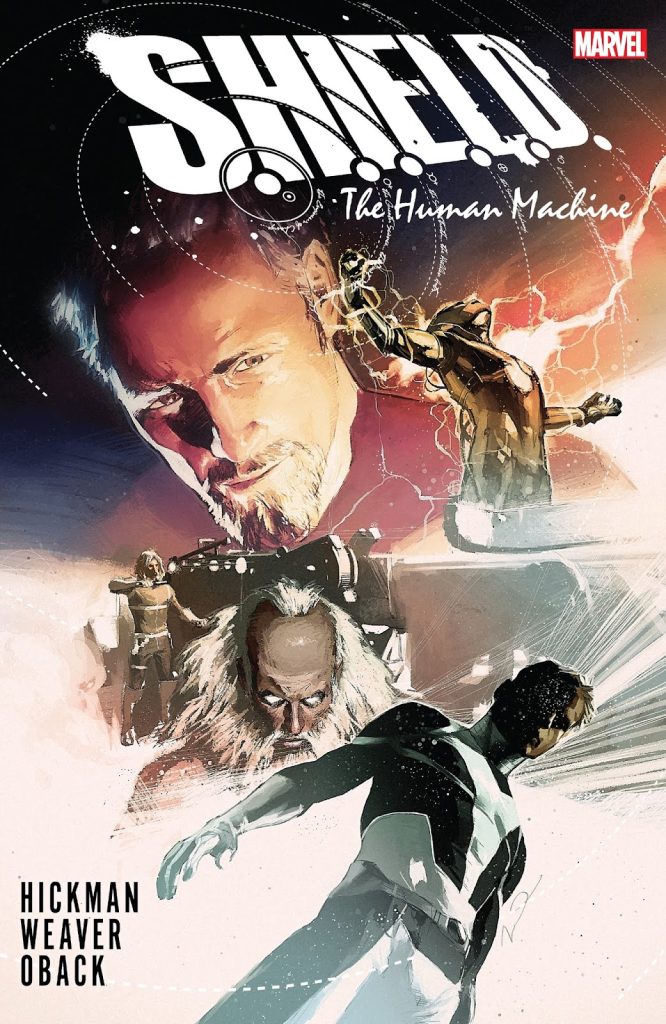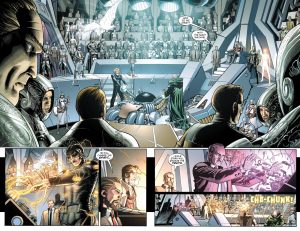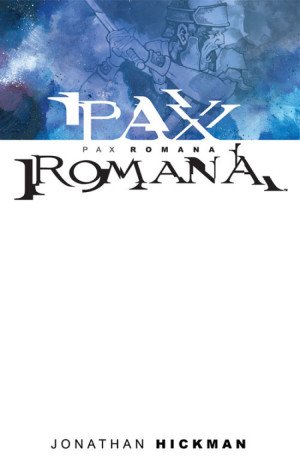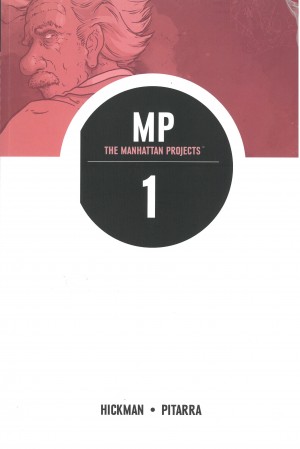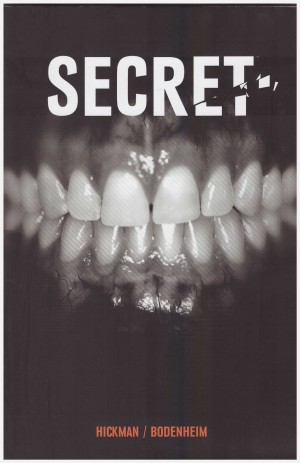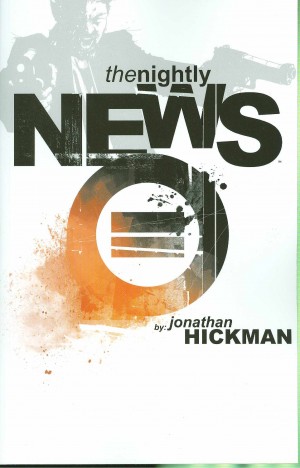Review by Frank Plowright
For reasons possibly disclosed somewhere online, Jonathan Hickman and Dustin Weaver’s remarkable revelations about the history of S.H.I.E.L.D. ground to a halt after ten chapters. The first six are collected in Architects of Forever, and this provides the conclusion along with some bonus shorts. The first four chapters as completed by 2014 are also available as a thick comic in The Rebirth, but The Human Machine makes that a redundant collection.
As this opens Hickman has revealed the history of S.H.I.E.L.D. stretches back far further than anyone imagined, and is much more than a responsive action organisation. History’s greatest minds, importantly artistic and scientific, have been involved, time is no impediment, and by 1960 a war has broken out between opposing ideologies espoused by Leonardo Da Vinci and Isaac Newton, with Newton the more proactive and violent.
Somehow pivotal to the outcome is Leonid, being guided by a mysterious presence unseen by anyone other than him. Their identity is revealed early, and feeds into the conceit of history’s greatest artistic and scientific minds as interpreted by Hickman shaping humanity, but being misguided at best and prescriptive at worst.
A complex and conceptual story fuses ideas to personalities, interpreted by Weaver with page upon page of exceptionally detailed art. Perhaps it’s appropriate that a story featuring Renaissance artist, architect and sculptor Michelangelo as a primary character is drawn by someone who pours so much effort into the locations, clothing, technology, fixtures and fittings. For a long sequence Hickman doesn’t supply any words, and leaves Weaver to supply the wonder. Page for page, there’s even more to admire here than in Architects of Forever, and the artistic complexity grows as The Human Machine continues. By the penultimate chapter Weaver is delivering three alternate possibilities of humanity’s future across parallel narratives that progress until they connect. It’s astounding work, and as a finale Weaver reconstructs the universe from the beginning with the history of humanity unfolding from that.
Thankfully, Hickman’s ultimate solution is more refined than it seemed it was going to be after the curtailment of Rebirth. It’s big ideas given a fantastic canvas, but for some readers the fragmented method of storytelling will be off-putting, and here Hickman is his own worst enemy. This isn’t a superhero story to skim through in a spare thirty minutes, but a novel that needs to be followed with the reader paying as much attention to detail as Weaver does. On that basis it’s rewarding if ultimately delivering a simple homily.
Four connected short stories by different artists see out the collection. They’re used by Hickman to fill in small details absent from the main story, or to offer fresh perspective on the cast. After twelve chapters of Weaver’s art, the very different and largely looser methods of these artists may not impress. Nick Pitarra also employs detail, but none of the other artists hit the spot, including Gabriel Hernández Walta, so good elsewhere. However, it’s bonus material, and as such negligible.
Conceptually dense and offering an age of enlightenment, the suspicion is that Weaver’s contribution will prove to have a greater resonance than Hickman’s, but The Human Machine is a fulfilling conclusion to an ambitious saga.
